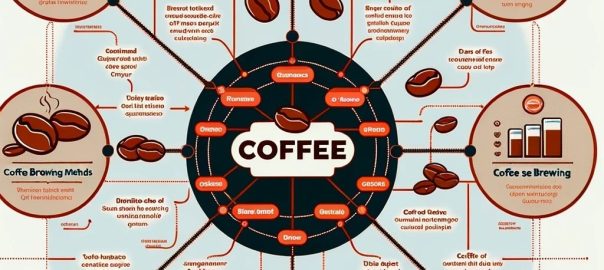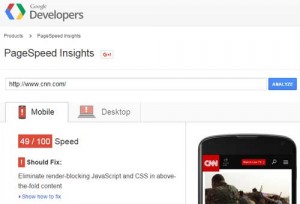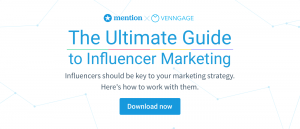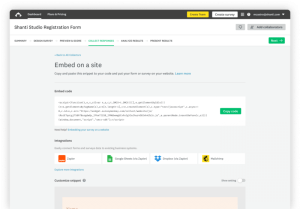Beyond Keywords: Leverage Topical Maps for Content Coverage
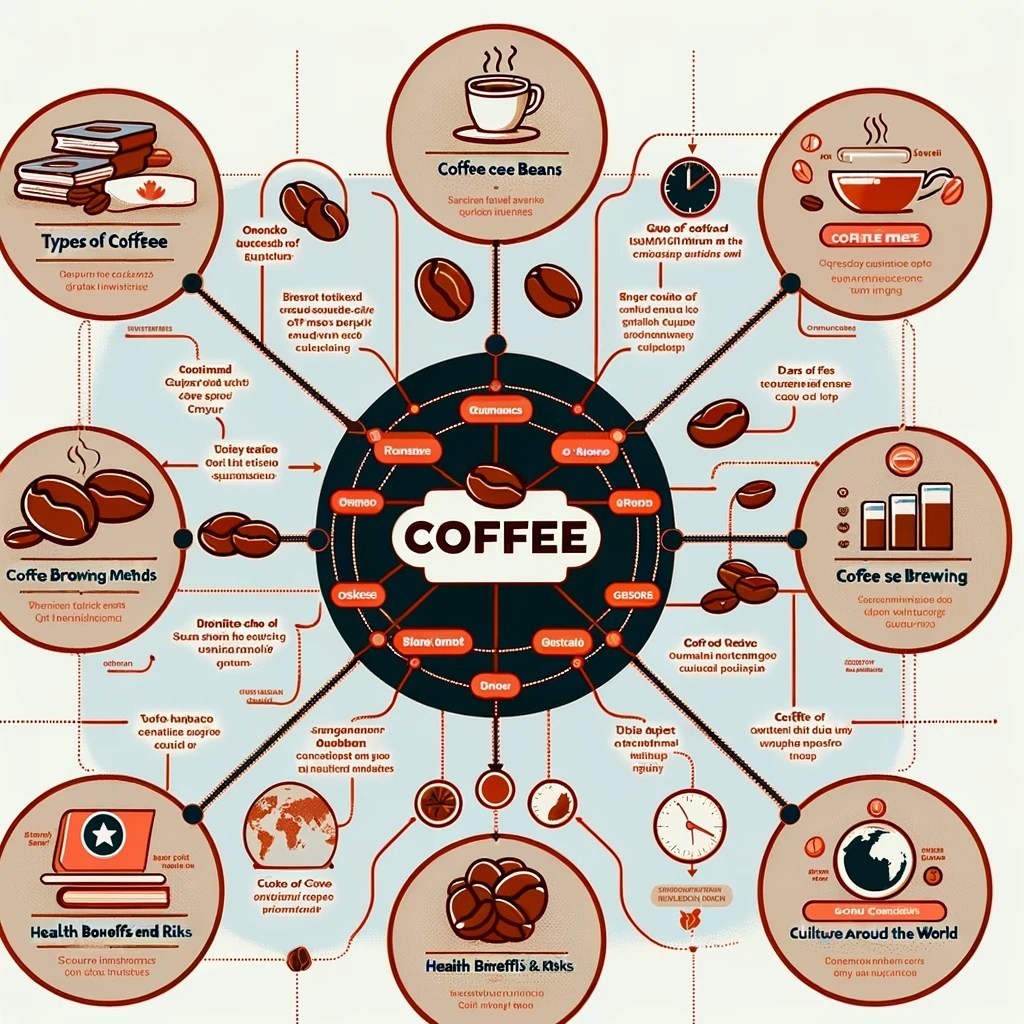
At its core, content strategy is all about planning, creating, delivering, and managing content so that it serves both your business goals and meets your audience’s needs. It’s not just about blogging or social media posts; it’s about every piece of content you produce, from videos to podcasts, infographics, and beyond. It’s the big-picture thinking that helps ensure every tweet, blog post, or email newsletter works together harmoniously to tell your brand’s story in the most effective way possible.
But why is it so important? Well, a good content strategy helps you stand out, connect with your audience on a deeper level, and ultimately drive more business. Without a strategy, you’re basically wandering in the dark, hoping to stumble upon success. With a strategy, you’ve got a clear path to follow, complete with signposts and directions that guide your content creation and distribution efforts towards achieving your business objectives.
In essence, having a content strategy is like having a secret weapon. It enables you to create meaningful, cohesive, engaging, and sustainable content that attracts and retains audiences. It ensures that every piece of content has a purpose and fits within a larger narrative, making your content marketing efforts more efficient and effective.
Understanding Topical Maps
Alright, let’s get into the nitty-gritty of topical maps and why they’re pretty much the secret sauce to supercharging your content strategy. Imagine for a moment your high school science class, but instead of memorizing the periodic table, you’re diving into the world of topics related to your business or industry. That’s what topical maps are all about.
In simple terms, a topical map is like a big, detailed mind map that organizes and structures your content around core themes or topics relevant to your audience and your brand. Think of it as organizing your content closet. You’ve got different sections for various topics (like shirts, pants, and shoes in your wardrobe), and within those sections, you have subtopics (like casual wear, formal wear, sports gear, etc.).
Unlike traditional keyword research that focuses on individual keywords, topical maps encourage you to think about the bigger picture. It’s not just about what keywords to target; it’s about understanding the broader context of your audience’s interests and questions. This way, you’re not just answering one-off queries; you’re building a comprehensive resource that serves your audience’s needs on multiple levels.
And here’s the real kicker: topical maps make planning your content a whole lot easier. Once you have your map laid out, you can see where the gaps are, what topics you’ve covered well, and where you might need to beef things up a bit. It’s like having a content blueprint that guides your creation process, ensuring you’re always producing relevant, valuable content that resonates with your audience and supports your business goals.
Creating a Topical Map: Step-by-Step Guide
Let’s dive into the how-to part of creating a topical map.
Step 1: Identify Your Core Topics
First things first, you need to figure out your big-picture themes. These are the core topics that are super relevant to your business and, most importantly, interesting to your audience. Think broad – like “health and wellness” for a fitness brand or “home improvement” for a DIY blog. What are the key areas you want to be known for? Jot these down; they’re the cornerstones of your topical map.
Step 2: Break Down into Subtopics
Once you’ve got your core topics, it’s time to drill down into the details. For each core topic, list out subtopics that cover different aspects of the main theme. If your core topic is “health and wellness,” subtopics might include “nutrition,” “exercise,” “mental health,” and so on. This step helps you cover all the bases and ensures you’re hitting all the angles your audience might be interested in.
Step 3: Keyword Research and Audience Insights
Now, with your subtopics in hand, it’s time to get a bit more granular. Use keyword research tools and dive into audience insights to find specific questions, concerns, and keywords related to your subtopics. This step is crucial because it helps you understand exactly what your audience is looking for. You’re not just guessing what content will resonate; you’re backing it up with data.
Step 4: Map Content to Subtopics
Here’s where the magic happens. For each subtopic, start mapping out specific content ideas that answer the questions and keywords you’ve identified. Think blog posts, videos, infographics – any format that will engage your audience. This step turns your topical map into a content planning tool, showing you exactly what content you need to create to cover each subtopic thoroughly.
Step 5: Plan for Content Gaps
As you map out content for each subtopic, you’ll likely spot gaps – areas you haven’t covered yet or questions left unanswered. Highlight these gaps; they’re opportunities for new content that can fill in the blanks and make your topical map (and your site) even more comprehensive.
Step 6: Prioritize and Schedule
Finally, with your topical map filled out, it’s time to prioritize and schedule your content creation. Not all topics are created equal, so consider your business goals, audience interest, and SEO potential as you decide which content to tackle first. Then, get it on the calendar. Consistency is key, so plan a steady stream of content that keeps your audience engaged and helps cement your authority on the topics you’ve mapped out.
Creating a topical map might seem like a lot of work upfront, but trust me, it pays off big time. It keeps your content focused, relevant, and, most importantly, valuable to your audience. Plus, it makes your life easier by turning the chaos of content creation into a well-organized, strategic process.
Integrating Topical Maps into Content Strategy
Integrating topical maps into your content strategy is like adding a turbocharger to your car’s engine—it’s all about getting more power and performance out of your content efforts. Now that you’ve got your topical map ready to go, let’s talk about how to weave it into your content strategy seamlessly. Here’s how to make sure your topical map doesn’t just sit there collecting digital dust but actually drives your content forward.
Step 1: Align With Business Goals and Audience Needs
First up, make sure your topical map aligns with your overall business goals and meets your audience’s needs. Your map is a tool, not just a pretty diagram. Every core topic and subtopic should support your objectives, whether that’s building brand awareness, generating leads, or establishing authority in your niche. Also, ensure that the content you plan addresses your audience’s questions, pain points, and interests. This alignment is critical for creating content that resonates and achieves your business goals.
Step 2: Use Your Map for Content Gap Analysis
Now that your topical map is part of your strategy, use it to conduct a thorough content gap analysis. Look at your existing content and see where it fits within your map. You’ll likely find areas that are well-covered and others that are practically content deserts. These gaps are golden opportunities for new content that can fill in the blanks, ensuring comprehensive coverage of your core topics and subtopics. This approach not only helps you identify what content to create next but also ensures you’re building a robust, interconnected content ecosystem.
Step 3: Plan Your Content Creation and Distribution
With a clear view of where the gaps are, it’s time to plan your content creation and distribution. Your topical map should guide what topics you tackle, in what format, and when. Think about the journey you want your audience to take through your content. Use your map to plan a mix of content types (blogs, videos, infographics, etc.) that cater to different audience preferences and stages of the buyer’s journey. Then, schedule your content publication and distribution across your channels to ensure a steady, engaging flow of content that draws your audience in and keeps them coming back for more.
Step 4: Optimize and Interlink Your Content
One of the beauties of a topical map is how it showcases the relationships between topics. Use this to your advantage by optimizing and interlinking your content. Make sure each piece of content not only covers its topic thoroughly but also links to related content on your site. This approach enhances the user experience by making it easy for readers to find more of what interests them and helps search engines understand the structure and authority of your site, which can boost your SEO.
Measuring the Impact of Topical Maps
Once you’ve integrated topical maps into your content strategy and started cranking out that finely tuned, targeted content, it’s time to roll up your sleeves and dive into the numbers. Measuring the impact of your topical maps is crucial because, let’s face it, what’s the point of all this effort if you’re not sure it’s moving the needle, right? Here’s how to track, analyze, and interpret the performance of your content to ensure your topical maps are doing their job.
Step 1: Define Your Key Performance Indicators (KPIs)
First up, you need to know what success looks like for your content strategy. This means setting clear, measurable KPIs that align with your business goals. Are you looking to boost website traffic, increase engagement, drive conversions, or establish thought leadership? Depending on your objectives, your KPIs could include metrics like organic search rankings, page views, time on page, bounce rate, social shares, backlinks, conversion rate, and more. Having these KPIs in place gives you a benchmark to measure against.
Step 2: Use Analytics Tools to Track Performance
With your KPIs in hand, it’s time to get friendly with analytics tools. Google Analytics is a great place to start, but don’t overlook other tools that can offer insights specific to different platforms, like social media analytics. These tools will help you gather data on how your content is performing across different channels and how users are interacting with it. Look for trends in the data that tie back to your topical map’s structure, such as increased traffic or engagement on content related to specific subtopics.
Step 3: Analyze SEO and Organic Search Impact
Since one of the main benefits of using topical maps is to improve SEO and organic search performance, pay close attention to how well your content ranks for targeted keywords and topics. Tools like Google Search Console, Ahrefs, or SEMrush can provide insights into your search rankings, keyword positions, and visibility. Watch for improvements in these areas as a sign that your topical map is helping boost your authority and relevance in your niche.
Step 4: Evaluate User Engagement and Behavior
Beyond just attracting visitors, you want to make sure they’re engaging with your content in meaningful ways. Analyze metrics like time on page, pages per session, and bounce rate to gauge how well your content resonates with your audience. High engagement levels on content tied to specific subtopics in your topical map can indicate what’s working well and where you might need to adjust your strategy to keep readers hooked.
Step 5: Assess Content’s Contribution to Business Goals
Ultimately, the impact of your topical maps should be measured by how well they contribute to achieving your overall business goals. This means connecting the dots between content engagement and conversions or other desired actions. Whether it’s newsletter sign-ups, product inquiries, or sales, use tracking URLs, conversion funnels, and attribution models to understand how your content drives users toward these goals.
Step 6: Iterate and Optimize Based on Insights
Finally, measuring the impact of your topical maps isn’t a one-and-done deal. It’s an ongoing process that should inform your content strategy over time. Use the insights you gather to iterate and optimize your topical map and content plan. Maybe you discover new subtopics that resonate with your audience or find that certain types of content perform better than others. Be ready to adjust your strategy, experiment with new ideas, and continuously refine your approach based on data-driven insights.
Challenges and Best Practices
Even with the best laid plans, integrating topical maps into your content strategy can come with its share of challenges. But don’t sweat it—every challenge is just an opportunity in disguise to refine your approach and get even better results. Here are some common hurdles you might face, along with best practices to help you navigate through them like a pro.
Challenges
Keeping Up with Evolving Topics
One of the biggest challenges is ensuring your topical map stays relevant in an ever-changing landscape. Trends evolve, new competitors emerge, and audience interests shift, which can make your once cutting-edge content feel outdated.
Balancing Broad and Specific Topics
Finding the sweet spot between too broad and too niche can be tricky. Go too broad, and your content might lack depth; too niche, and you might not attract enough interest or search volume to make an impact.
Maintaining Content Quality and Consistency
As you scale your content production to cover more topics and subtopics, maintaining a high standard of quality and a consistent voice across all your content can become challenging.
Measuring Impact Accurately
With so many metrics and tools available, it can be overwhelming to measure the impact of your topical map accurately. Identifying which metrics truly matter to your goals is key.
Best Practices
Regularly Update Your Topical Map
To keep your content strategy relevant, periodically review and update your topical map. Add new emerging topics, prune ones that are no longer relevant, and adjust based on audience feedback and market trends. This keeps your content fresh and engaging.
Find Your Focus
Strike a balance between broad and niche topics by focusing on your audience’s intent. Use keyword research and audience insights to understand the questions and problems your audience is trying to solve, and tailor your topics to meet those needs.
Prioritize Quality Over Quantity
It’s better to produce fewer pieces of high-quality, in-depth content than to churn out a high volume of low-quality pieces. Invest in thorough research, expert insights, and engaging storytelling to make each piece of content count.
Choose the Right Metrics
Focus on metrics that align with your specific goals. If brand awareness is your aim, look at reach and engagement. For lead generation, track conversion rates and lead quality. Regularly review these metrics to assess performance and adjust your strategy accordingly.
Foster Collaboration and Feedback
Encourage collaboration between different teams (content, SEO, social media, etc.) to ensure a cohesive strategy and consistent messaging. Regular feedback loops with your audience can also provide valuable insights into what content resonates and why.
Stay Agile and Experiment
Don’t be afraid to experiment with new content formats, distribution channels, or promotional tactics. Use A/B testing to see what works best and be ready to pivot your strategy based on what the data tells you.
Future of Topical Maps in Content Strategy
As we look toward the horizon of content strategy, it’s clear that topical maps are set to play an even more pivotal role. The digital landscape is constantly evolving, with new technologies, shifting user behaviors, and emerging trends reshaping the way we create and consume content. Here’s a glimpse into the future of topical maps in content strategy and how they’re likely to evolve to keep pace with these changes.
Embracing AI and Machine Learning
Artificial Intelligence (AI) and machine learning are already making waves in content creation and SEO, and their influence is only going to grow. These technologies can help automate the process of identifying emerging topics and trends, making it easier to keep your topical map updated in real-time. AI can also analyze user engagement and content performance at scale, providing insights that can refine and optimize your topical map for better results.
Enhanced Personalization
As audiences become more fragmented, the demand for personalized content will increase. Topical maps will need to adapt by incorporating user data and behavior patterns to deliver highly personalized content recommendations. This means not just creating content for broad audience segments, but tailoring content to meet the individual needs and interests of each user, enhancing engagement and loyalty.
Voice Search and Conversational Queries
With the rise of smart speakers and voice-activated search, topical maps will need to account for conversational queries and natural language processing. This shift will require a focus on long-tail keywords and question-based content that aligns more closely with how people naturally speak. Content strategies will need to incorporate these elements into their topical maps to ensure visibility and relevance in voice search results.
Visual and Interactive Content
As technology advances, so does the appetite for visual and interactive content. Future topical maps will likely include a more diverse range of content formats, from augmented reality (AR) and virtual reality (VR) experiences to interactive infographics and video content. This diversity will not only cater to different learning styles and preferences but also provide more engaging and immersive ways to explore topics and subtopics.
Integration with Other Marketing Channels
Topical maps will become more integrated with other aspects of digital marketing, from social media to email campaigns and beyond. This integration will ensure a cohesive user experience across all touchpoints, with content that’s consistently relevant and aligned with the user’s journey. As a result, topical maps will become a central component of omnichannel marketing strategies, guiding content creation and distribution across all platforms.
Topical Mapping Resources
Books
-
“” by Kristina Halvorson and Melissa Rach – A foundational read that covers the basics of content strategy, including how to analyze, plan, and implement content that meets your business goals.
-
“” by Ann Handley – This book offers practical tips and insights for creating engaging and effective content, making it a must-read for content creators.
-
“” by Meghan Casey – A comprehensive guide that provides tools and templates for developing and executing a successful content strategy.
Blogs
-
(CMI) – Offers a wealth of articles, research, and training resources on all things content marketing and strategy.
-
– An excellent resource for SEO and content marketing insights, including tips on how to leverage topical maps for SEO success.
-
– Covers a wide range of topics from content strategy to inbound marketing, with practical advice and strategies for marketers.
Tools
-
: This online mind mapping tool is perfect for brainstorming and organizing your topical maps. It allows you to create visually appealing mind maps that can be shared and collaborated on with your team. With MindMeister, you can easily structure your core topics, subtopics, and related content ideas in a hierarchical, easy-to-understand format.
-
: Trello is a flexible project management tool that can be adapted for topical mapping. By creating boards for your core topics and cards for your subtopics and content ideas, Trello allows you to organize and prioritize your content strategy visually. Its collaboration features also make it easy to work on your topical map with a team, assigning tasks and tracking progress.
-
: XMind is a powerful mind mapping and brainstorming tool that offers a range of templates and structures, including mind maps, fishbone diagrams, and matrixes, suitable for creating detailed topical maps. It’s great for diving deep into each topic, exploring relationships between ideas, and organizing your thoughts in a cohesive manner.
-
: Coggle is an online tool designed for creating and sharing mind maps. It stands out for its simplicity and user-friendly interface, making it easy to draft topical maps even for those new to mind mapping. With Coggle, you can create colorful, dynamic diagrams that help visualize your content strategy’s structure and flow.
-
: Miro is a versatile digital whiteboard that’s ideal for collaborative brainstorming and planning sessions. It allows you to create topical maps using mind maps, flowcharts, and diagrams, with an extensive set of features and integrations. Miro’s real-time collaboration capabilities make it perfect for teams looking to build and refine their content strategy together.
Courses
-
– Offers a series of courses that cover the essentials of content strategy, from creation to management and optimization.
-
– A free course that teaches SEO fundamentals, including how to integrate SEO considerations into your content strategy.
Conferences and Workshops
-
– An annual conference that brings together top content marketing professionals to share insights, trends, and best practices.
-
The post Beyond Keywords: Leverage Topical Maps for Content Coverage appeared first on Search Engine People Blog.
About the Author: Ruud Hein
(7)
